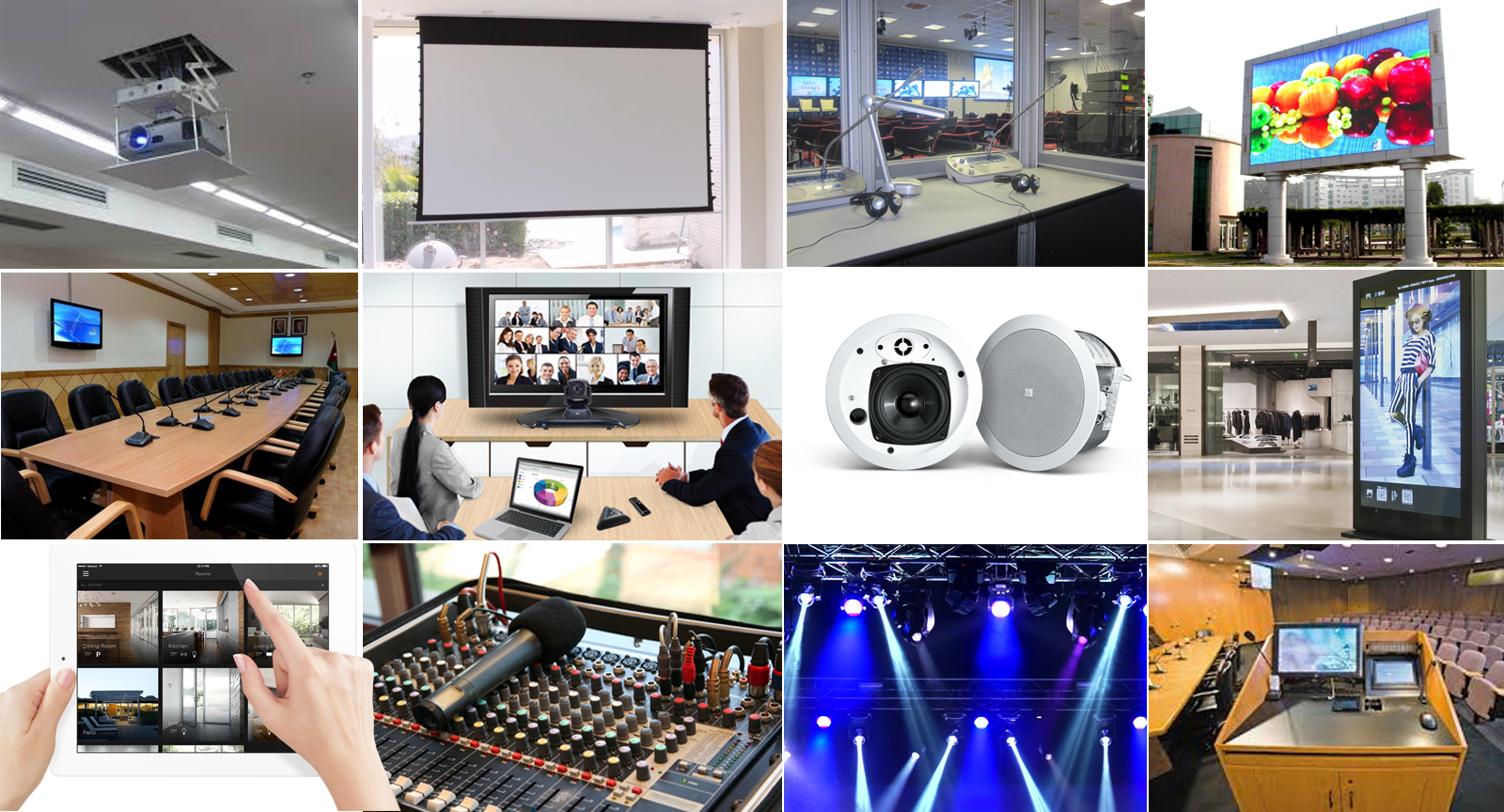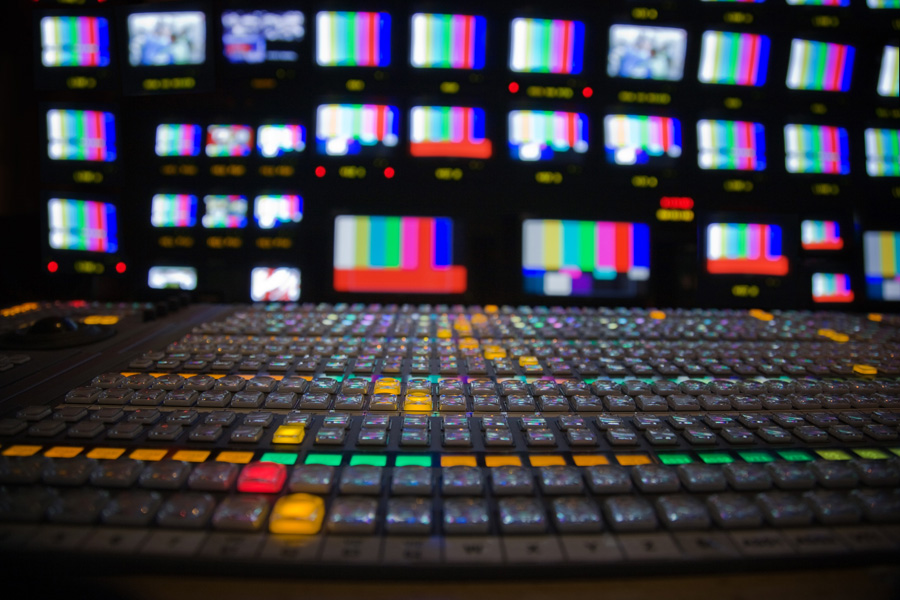How audio visual charlotte nc creates unforgettable visual displays
Wiki Article
Comprehending the Incorporation of Audio Visual Technology in Today's Educational Environments
The assimilation of audio-visual technology in academic setups has actually changed the teaching and learning process. Educators now have access to tools that provide to numerous finding out styles, improving student interaction and cooperation. However, the consolidation of these technologies presents both opportunities and challenges. Comprehending how to efficiently carry out these tools is crucial. What approaches can instructors use to optimize the benefits of audio-visual innovation in their classrooms?The Evolution of Audio-Visual Technology in Education And Learning
As instructional requirements progressed over the decades, audio-visual technology undertook substantial makeovers that improved the learning setting. Originally, tools such as film projectors and slide programs were the key ways of incorporating visual elements into class. These very early modern technologies given educators with the ability to present information dynamically, yet they were restricted in availability and interactivity.With the arrival of video clip cassette recorders in the 1970s, classrooms began to incorporate taped lessons, expanding the range of instructional sources. The introduction of computers in the 1980s additional revolutionized this landscape, enabling the development of multimedia discussions and interactive knowing experiences.
The increase of the internet in the 1990s marked a zero hour, making it possible for real-time access to a wide range of audio-visual materials. Today, electronic tools such as interactive whiteboards and on-line learning systems remain to boost the academic experience, cultivating engagement and partnership amongst students.
Advantages of Audio-Visual Tools for Diverse Discovering Styles
Audio-visual tools play a necessary duty in accommodating diverse knowing styles by boosting aesthetic learning and improving auditory involvement. By integrating images, videos, and noise, these innovations produce a more comprehensive academic atmosphere. This complex approach permits instructors to address the varied preferences and demands of pupils effectively.Enhancing Visual Learning
Engagement in the knowing process is markedly improved via using audio-visual devices, satisfying numerous finding out designs. These tools, such as videos, infographics, and interactive presentations, provide visual stimulations that aid understanding and retention. Visual learners, specifically, take advantage of the incorporation of images and animations, which can simplify complicated ideas and boost understanding. Furthermore, audio-visual resources can illustrate real-world applications, making finding out more pertinent and appealing. By integrating shade, activity, and noise, instructors can develop a dynamic discovering atmosphere that catches pupils' focus and cultivates much deeper cognitive connections. Ultimately, the critical use of audio-visual innovation not just sustains visual learning yet also enhances the total instructional experience for diverse students.Improving Auditory Involvement
A significant advantage of incorporating audio-visual tools in education and learning is their capacity to improve acoustic engagement among students. These tools, which encompass multimedia discussions, podcasts, and interactive audio elements, cater to numerous learning styles, especially benefiting acoustic students (audio visual charlotte nc). By integrating sound and narrative, instructors can develop immersive experiences that record pupils' attention and enhance understanding. This engagement is crucial, as it fosters a deeper understanding of the product and promotes retention. Additionally, audio-visual tools can help with collaborative discovering atmospheres, encouraging pupils to join conversations and share their insights. Eventually, the unification of audio-visual innovation not only sustains acoustic involvement yet also enriches the total instructional experience, making finding out more vibrant and reliable for all pupilsEnhancing Involvement With Interactive Learning

In addition, gamification elements, such as quizzes and simulations, can boost motivation and retention, making finding out much more enjoyable and efficient. These strategies not only promote cognitive involvement but likewise provide to varied learning styles, guaranteeing that all students can take part meaningfully. Because of this, interactive learning atmospheres promote a sense of area and belonging, ultimately resulting in boosted scholastic outcomes. Through the assimilation of audio visual innovation, teachers can change typical class into dynamic areas where pupils thrive and actively shape their educational journeys.
Connecting Theory and Technique With Multimedia Resources
Multimedia sources act as a critical link between theoretical ideas and functional application in instructional setups. By boosting involvement, facilitating collaborative learning experiences, and supporting varied understanding styles, these tools create an extra comprehensive and vibrant discovering atmosphere - audio visual charlotte nc. This strategy not just cultivates much deeper understanding but also prepares students for real-world challenges
Enhancing Engagement Through Multimedia
Involvement in instructional settings considerably boosts when trainers incorporate multimedia sources right into their mentor strategies. Using video clips, podcasts, and interactive presentations enhances the learning experience, enabling pupils to attach with the product on multiple degrees. Multimedia resources accommodate different finding out styles, providing aesthetic, acoustic, and kinesthetic stimulations that can hold students' attention a lot more effectively than conventional lecture approaches. Additionally, these sources can simplify complicated ideas, making them a lot more accessible and memorable. By integrating multimedia, teachers can produce a dynamic classroom setting that fosters interest and motivates students. Inevitably, the calculated use audio-visual innovation offers to bridge the gap in between theoretical understanding and functional application, enhancing the academic experience for both instructors and pupils.Assisting In Collaborative Knowing Knowledge
Many research studies show that collective learning experiences markedly improve student outcomes when incorporated with multimedia sources. Multimedia tools promote communication among students, allowing them to participate in problem-solving and crucial assuming jointly. By utilizing video clip conferencing, joint platforms, and interactive discussions, instructors develop environments for teamwork and shared learning. These modern technologies allow trainees to interact their concepts properly and receive instant feedback, fostering a deeper understanding of the subject. In enhancement, multimedia sources can offer intricate concepts in even more digestible formats, promoting discussion and partnership. As an outcome, the mix of joint discovering and audio-visual modern technology not only enriches the academic experience however also prepares students for real-world team effort characteristics, stressing the importance of teamwork and collective understanding construction.Supporting Diverse Discovering Styles
While conventional mentor methods usually accommodate a limited series of learning preferences, the get more info integration of audio-visual innovation uses a much more comprehensive method to education and learning. By using multimedia sources such as video clips, interactive simulations, and digital presentations, instructors can resolve various discovering styles, including aesthetic, acoustic, and kinesthetic. This adaptability permits set apart guideline, allowing pupils to involve with web content in means that reverberate with their private choices. Additionally, audio-visual devices can help with deeper understanding by giving several representations of intricate concepts. Because of this, pupils that might battle with conventional methods can discover alternate pathways to success, fostering an extra fair knowing setting that sustains academic achievement for all students.Obstacles in Executing Audio-Visual Modern Technology
Although audio-visual technology holds terrific promise for enhancing educational experiences, its application frequently comes across significant challenges. One key worry is the financial problem associated with getting and keeping such equipment, which can stress budget plans, specifically in underfunded establishments. Furthermore, poor training for educators can hinder reliable assimilation, leaving them ill-prepared to utilize the technology fully. Technical problems, such as software application breakdowns and compatibility problems, may also interfere with lessons and discourage both educators and pupils. In addition, varying degrees of student accessibility to technology outside the class can create disparities in finding out possibilities. Lastly, the possibility for over-reliance on innovation may take away from essential teaching techniques, eventually restricting the instructional experience. Addressing these challenges needs a comprehensive technique, consisting of sufficient financing, specialist growth, and equitable access to sources, to ensure that audio-visual modern technology can be leveraged properly in today's educational settings.Finest Practices for Integrating Innovation in the Classroom

Furthermore, cultivating an interactive environment with joint devices urges trainee engagement and participation. Using diverse audio-visual resources accommodates different finding out styles, accommodating aesthetic, auditory, and kinesthetic students. Frequently assessing the impact of innovation on trainee learning aids educators refine their methods and adapt to changing demands. Involving trainees in the choice of modern technology advertises possession and motivation. By sticking to these best methods, educators can create a dynamic classroom environment that successfully integrates technology and improves the academic experience for all trainees.
The Future of Audio-Visual Modern Technology in Education And Learning
As class significantly accept innovation, the landscape of audio-visual devices in education proceeds to advance (audio visual charlotte nc). Future advancements are anticipated to focus on higher interactivity and personalization, permitting educators to customize learning experiences to individual pupil demands. Innovations such as increased fact (AR) and online reality (VR) will likely offer immersive understanding settings, enhancing student involvement and understanding
Artificial intelligence (AI) is poised to play a substantial function in audio-visual innovation by offering real-time feedback and flexible learning pathways. This assimilation may help educators determine and address trainee challenges extra successfully. Cloud-based systems will certainly promote simpler accessibility to resources and cooperation among trainees and educators, no matter area.
Along with these technical advances, expert growth for teachers will certainly be vital, ensuring they are equipped to utilize these tools efficiently. On the whole, the future of audio-visual innovation in education and learning promises to create even more vibrant, comprehensive, and impactful learning experiences.
Frequently Asked Inquiries
Exactly How Can Teachers Select the Right Audio-Visual Tools for Their Classrooms?
Picking proper audio-visual devices calls for teachers to evaluate their educational goals, think about pupil demands, evaluate available modern technology, and seek recommendations from peers or specialists, ensuring devices properly enhance knowing and involvement within their details classroom setting.What Budget Factors to consider Are There for Executing Audio-Visual Innovation?
Spending plan factors to consider for implementing audio-visual technology include first acquisition costs, maintenance costs, training for staff, and prospective software application licensing charges. Additionally, long-lasting financial investment in updates and replacements ought to also be factored into financial planning.Exist Certain Training Resources for Teachers on Audio-Visual Tools?
Many organizations use training sources for instructors on audio-visual devices, consisting of on the internet training courses, workshops, and educational overviews. These sources intend to improve educators' skills and self-confidence in efficiently incorporating modern technology right into their mentor techniques.How Do We Determine the Performance of Audio-Visual Innovation in Learning?
Determining the performance of audio-visual modern technology in finding out entails evaluating pupil engagement, comprehension, retention rates, and general scholastic performance. Surveys, analyses, and observational studies can give valuable insights right into its influence on educational end results.What Are Common False Impressions Regarding Audio-Visual Technology in Education And Learning?
Typical misconceptions about audio-visual modern technology in education and learning consist of the idea that it assures engagement and discovering outcomes, as well as the presumption that all students profit equally, neglecting private discovering choices and requirements.Report this wiki page